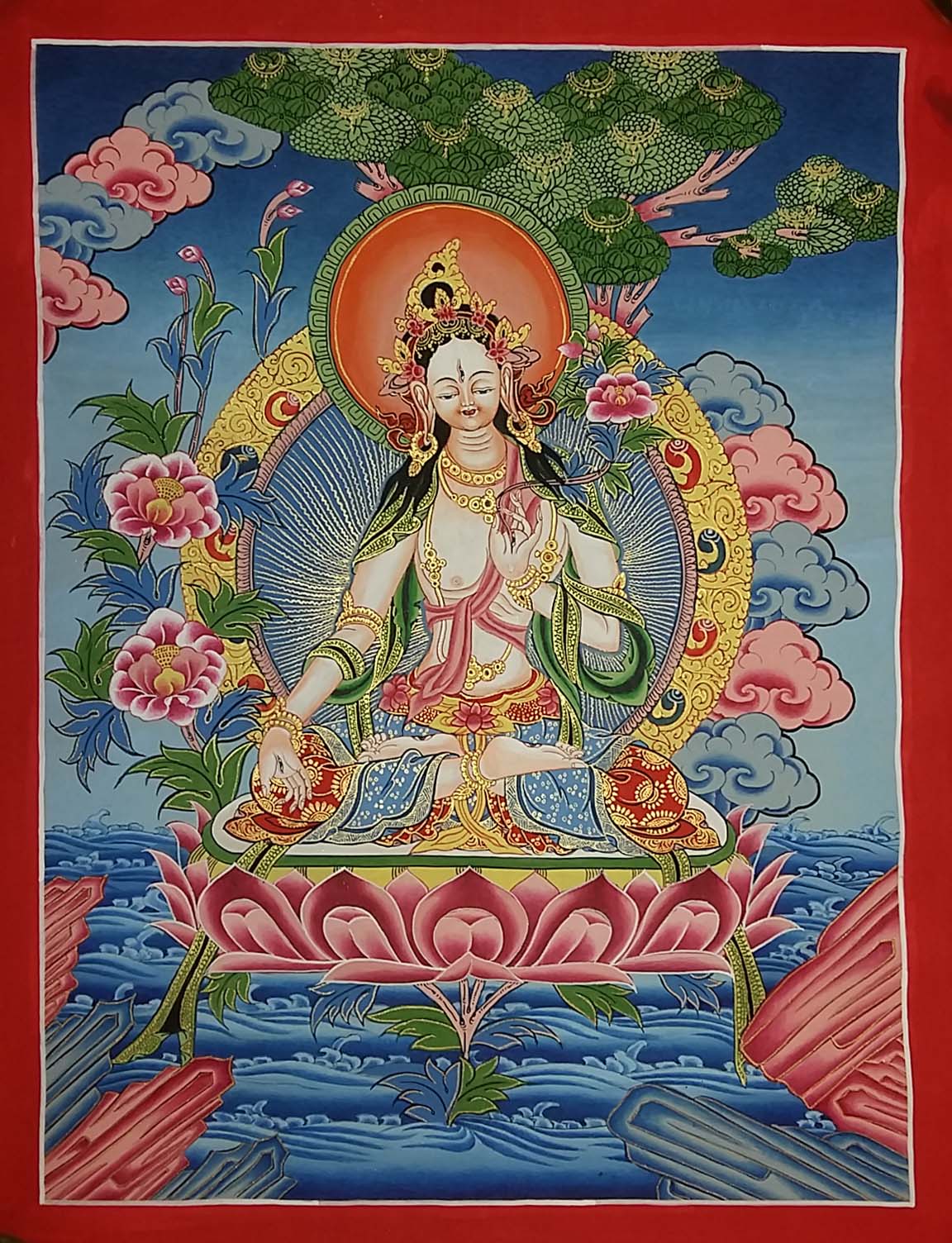

Dancing White Tara Paubha
Dancing White Tara Paubha is handpainted in the Newari style in cotton canvas with size 42*30cm.
White Tara is also known as Sita Tara. She is an emanation of Avalokiteshvara and in the Nepali Transcendent Buddha tradition is the consort of Vairochana, the central Transcendent Buddha.
Her inner virtue of loving compassion is magnified by the simplicity of her presentation. White Tara is an important Vajrayana Buddhist figure since she embodies the principle of loving-kindness, which is the central quality in the altruistic Bodhisattva presented through Mahayana Buddhism.
Her main emblem is the Pink Lotus representing this main quality.
Her left hand is gracefully lowered in an empty open palm boon granting gesture. White Tara has a blooming pink lotus & an unopened bud on either side of her body.
The lotus in the painting is stylized as a peony & a chrysanthemum to provide artistic contrast with her lotus throne. The open blossom represents the present and the bud represents the future situations & Buddhas yet to be born.
The future also refers to beneficial changes in circumstances that she will help bring about. Her right-hand wisdom hand is in the gesture of giving refuge.
The word refuge refers to the teaching of compassionate understanding which she imparts. The third finger touches the thumb to create a circle representing the union of wisdom and compassion, and the three extended fingers symbolize the Three Jewels of Buddhism
- The Buddha States
- The Body of teachings
- The Principles of the Universal
The same hand holds the stem of a blue lotus representing change. The lower part of the stem below the bend represents the root of the lotus in the mud. The allegory of the Lotus refers to something that grows from the obscurity of the mud & which eventually bursts open in the light.
The lotus journey is one of inner awakening & enlightenment analogous to the human spirit. Buddhism shows us how to grow towards the light with profound teachings which help us to navigate away from burdens and sufferings which we may have by being materially-minded, bitter & confused.












